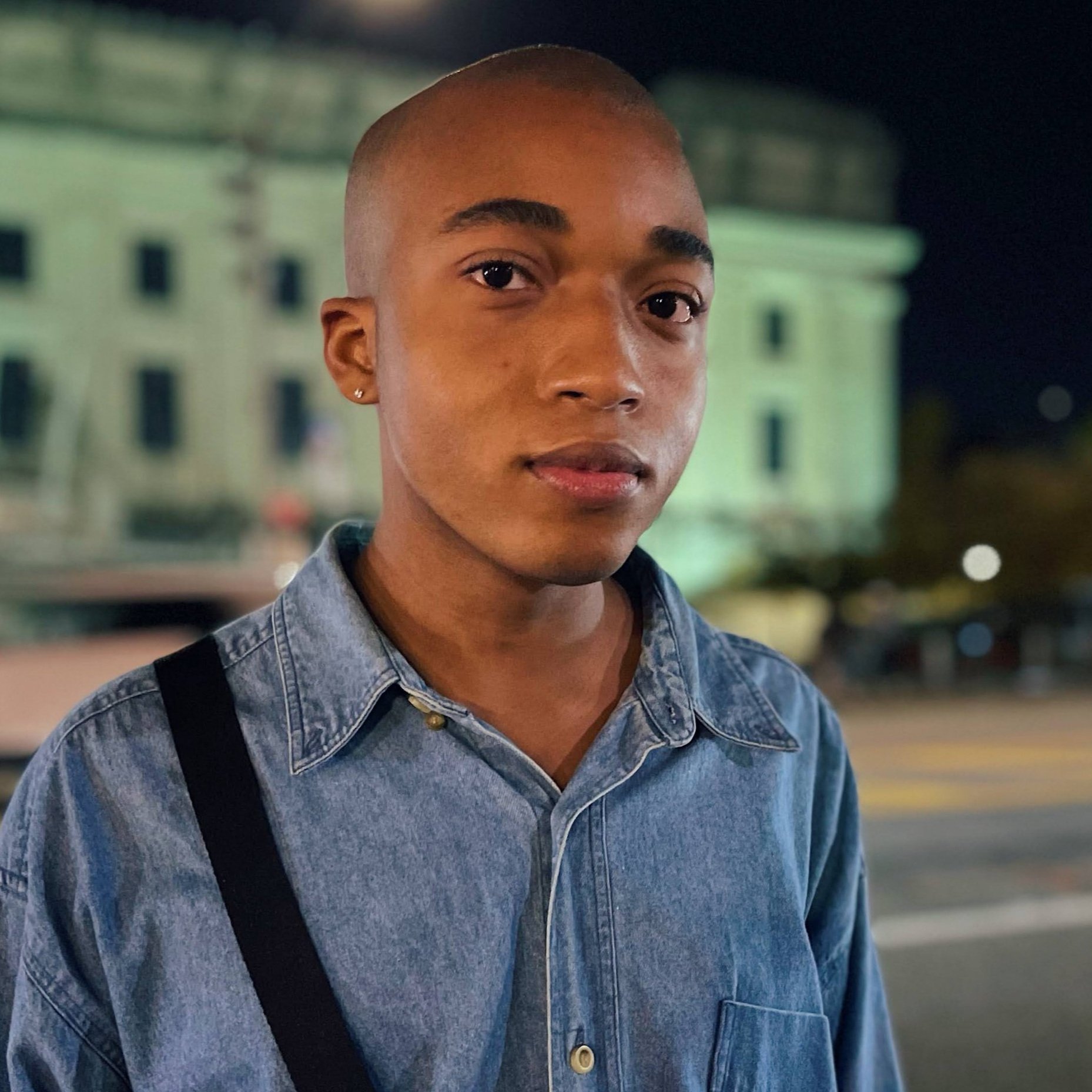Balancing Acts: Life as a Composer-Performer
written by Che Buford
Bahlest Eeble Readings Cycle 15 Fellow
When I tell people that I am a violinist and composer…
When I tell people that I am a violinist and composer, I find that many have trouble grappling with the fact that I do both as part of my practice. People either ask me to choose one or assume I'm far more proficient at one or the other. As a composer-performer, I continually question how my practices interact with one another. By exploring the mediums of electronic music and improvisation, I've found that they can inform each other while expanding new areas within each.
Having trained as a classical musician for 14 years, it is no secret that musical approaches and career paths are extremely narrow and limited. As violinists, we are trained to play and follow a repertoire sequence of canonical repertoire in the hope of obtaining an orchestral, chamber, or solo job. With composers, the training is centered around being a composer with a capital ‘’C’’ – which means your skill is judged on the number of works you’ve written for orchestras, choirs, and other traditional configurations. Fitting into these boxes never felt right for me. When the parameters of what a performer and composer should do are so constrained, it is hard to imagine how they could work together. I’ve thankfully found myself in spaces and have been inspired by today’s artists in the field who continually challenge these parameters. To name a few, Angelica Negron, Nathalie Joachim, Pamela Z, Darian Donovan Thomas, and Charmaine Lee.
Improvisation as a compositional process
These days, I find that my compositional process involves countless voice memos of recorded snippets and multiple solo improvisation sessions recorded into a DAW (Digital Audio Workstation) where I can layer, loop, explore textures/timbres, and plan out a piece. I use my violin or other MIDI instruments in the Logic Pro X library to record these sounds. This process of working allows me to obsess over the tangible aspects of playing my music, as well as explore timbre, atmosphere, form, and idiomacy in an organic way.
Electronics in composition
The piece "i said...", written for the GLFCAM Virtual Artist Partnership with Veda Hingert-McDonald as my collaborator, involved sending improvised material back and forth to generate the notated and electronic parts of the work. As a result, our disciplines were celebrated for their multifaceted nature. Various electronic instruments, Veda's vocalizations, and pre-recorded violins were included in the work.
Electronics in improvisational performance
I also had the opportunity to collaborate on work with my mother, who is a visual and performing artist. We created a work entitled ‘’When the Spirits Dance We’’ that dealt with themes of ancestral memory and the site-specific installation created by my mom at the House of World Cultures museum in Berlin, Germany. This fully improvised 30-minute work included a fixed media track consisting of the sounds of nature, live processing of my violin with four surround speakers, movement, and libations which created a uniquely outdoor immersive experience. I learned that my work as an improviser invites multitudes of interdisciplinary and collaborative possibilities regardless of discipline.
Improvisation inspiring new notation
I recently formed a new ensemble, Diaphanous Ensemble, which consists of composer-performer and improvising string players. For our debut concert, each member wrote a work for the group that encouraged improvisation. For me, this was my first time composing using graphics and I could see this being a medium that I would like to explore further in my practice.
My work Feel Fragments, my recent Bahlest Eeble Reading piece, incorporated moments of cellular notation that I tried for the first time. The material for this music came from fragments of improvisation that I recorded. Working closely with the musicians to fine-tune the details in this section of the work gave me a lot of insight into tips to notate more quasi-improvisatory elements for the future.
Finding the right balance between performance and composition will always be an ongoing process for me. It is greatly fulfilling and rewarding when I can do both while exploring new grounds that interest me. I am grateful to GLFCAM for offering me the space to explore some of these aspects of my practice. Working in a safe environment and being inspired by the many diverse artistic practices of the Fellows who go through these programs is endlessly inspiring.
Che Buford (he, they) is an NYC-based artist whose work explores creating new narratives within the world of music while engaging in themes of memory and place.
Che performs as a violinist in various musical settings such as traditional orchestras, chamber music, solo, improvisational performance, and interdisciplinary collaborations. Their own work explores the possibilities of timbre and acoustical phenomena and connects them to elements of place, memory, poetry, and the quotidian. Che has had the privilege of creating with artists such as Longleash, The Rhythm Method, New York Philharmonic, Castle of our Skins, mal sounds, Steph Davis, Adama Delphine Fawundu, and Deborah Jack. Their work has been presented and performed in spaces that include Roulette, Museum of Contemporary Art Chicago, Joe’s Pub, Antenna Cloud Farm, The DiMenna Center, and David Geffen Hall.
Che holds a degree from Boston Conservatory at Berklee as a presidential scholar in violin performance where he studied with Rictor Noren. In the fall, He will begin his DMA in composition at Columbia University. When Che isn’t interacting with music, he enjoys taking long walks, cooking vegan food, and thrifting.
Read more
